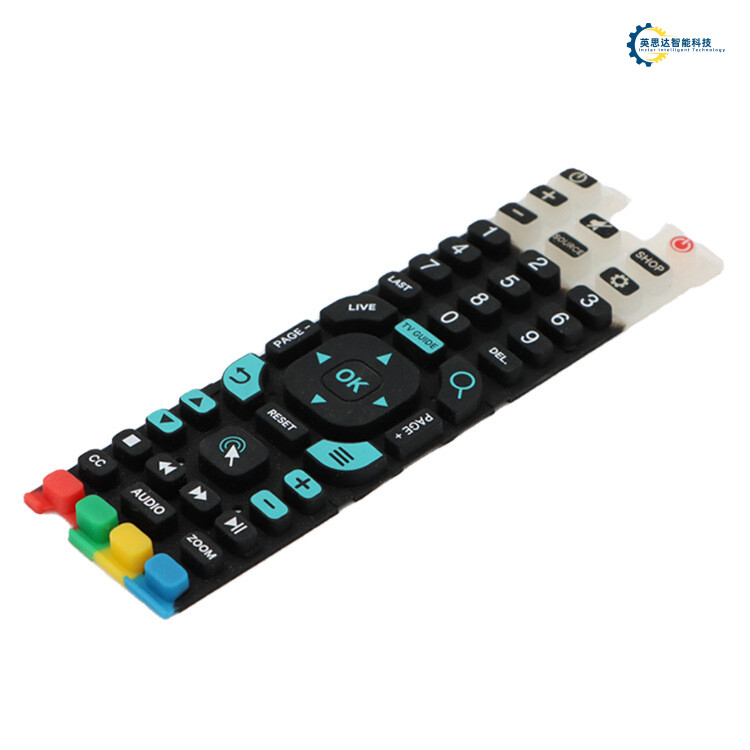Key Takeaways
So, you want to make PVC patches that look like they’ve been chiseled by Michelangelo after three espressos? Buckle up, because high-precision 3D logos aren’t just about slapping some plastic on fabric. It’s more like teaching a robot to paint and do calculus while juggling flaming torches. Let’s break down the wizardry without needing a PhD in "Patch-ology."
First off, multi-color layering isn’t just for rainbows or unicorn-themed birthday cakes. Imagine your design as a lasagna—except nobody’s eating it, and each layer has to perfectly align. Mess up the order, and your logo goes from "professional crest" to "abstract art reject." Pro tip: Label your color layers like you’d name pets. “Stay, Cyan! Good boy.”
Then there’s temperature-controlled molding, the unsung hero of patch-making. Too hot? Your patch melts into a modern art puddle. Too cold? It’ll crack faster than a dad joke at a comedy club. Think of it as baking cookies—except these cookies need to survive a washing machine apocalypse.
Fun Fact: The best durable silicone applications are like that one friend who never cancels plans. They stick around through rain, sweat, and questionable life choices.
And let’s not forget hydraulic systems. These bad boys apply pressure with the finesse of a ballet dancer wearing steel-toed boots. They’re why your patches don’t look like they’ve been stamped by a hyperactive toddler with a hammer.
Oh, and if you’re aiming for military-grade precision, remember: this isn’t a hobby. It’s a tactical mission. Miss a step, and your patches might end up as coasters for emotional support mugs.
Ready to turn your textile chaos into professional-grade glory? Keep reading. The next chapter’s where we talk about not setting your machine on fire. (Mostly.)

High-Precision 3D Logo Production Techniques
Ever tried drawing a masterpiece with spaghetti? Yeah, that’s what making 3D logos without a PVC patch machine feels like. But fear not! These machines are the Michelangelo of textile art, carving out details so sharp they could give a porcupine an inferiority complex. Let’s break down the wizardry behind these high-precision wonders.
First up: multi-color layering. Imagine stacking pancakes, but instead of syrup, you’re pouring molten PVC into molds thinner than your patience during a software update. Modern machines use hydraulic systems to press designs with the force of a toddler’s tantrum—controlled, precise, and oddly satisfying. The result? Logos that pop like confetti at a clown convention.
Temperature is the diva here. Temperature-controlled molding ensures your PVC doesn’t melt into a sad puddle (RIP, snowman in July). Most machines let you tweak settings hotter than a TikTok feud, so you can balance viscosity and detail retention. Check out this table comparing traditional vs. PVC machine methods:
| Method | Detail Precision | Color Layers | Durability |
|---|---|---|---|
| Hand Embroidery | Medium | 2-3 | High |
| Screen Printing | Low | 1-2 | Medium |
| PVC Patch Machine | High | 4-6 | Extreme |
And let’s not forget durable silicone applications. These bad boys stick to fabrics like gossip in a small town, surviving washes, wrinkles, and that one friend who “borrows” your hoodie forever. Whether you’re crafting logos for a biker gang or a kitten-themed yoga studio, 3D production techniques ensure your designs stay crisp—no matter how chaotic the world gets.
Pro tip: If your machine starts acting up, whisper sweet nothings to it. Machines love affirmations too. Probably.

Multi-Color Layering for PVC Patches
Ever tried painting a rainbow on a postage stamp? That’s basically what multi-color layering feels like when you’re crafting PVC patches—except instead of a tiny brush, you’ve got a high-precision PVC patch machine doing the heavy lifting. Think of it as baking a cake, but instead of flour and frosting, you’re stacking vibrant silicone layers like a boss. Each color gets its own “floor” in the 3D design, with the machine acting like a hyper-organized interior designer—no clashing hues allowed!
Here’s the kicker: temperature-controlled molding isn’t just for fancy chocolate sculptures. When layering colors, the machine adjusts heat like a picky barista perfecting espresso shots. Too hot? Your neon green might melt into the red like a sad Christmas disaster. Too cold? The layers won’t bond, leaving your patch flakier than a croissant. Pro tip: treat each color like a diva—give it its own spotlight (and curing time) before adding the next.
And hey, if you’re wondering why your DIY glitter glue patches look like kindergarten art, remember: hydraulic pressure systems in these machines apply force more evenly than your impatient thumb ever could. The result? Crisp edges, seamless blends, and a final product so sharp it could probably cut through your existential dread.
Up next: how temperature-controlled molding turns PVC from floppy pancake to structured masterpiece. Spoiler: it’s not magic—just science with a side of “don’t touch that dial!”

Temperature-Controlled Molding Processes
Picture this: your PVC patch machine is basically a fancy oven for plastic art. But instead of burning cookies, you’re crafting high-precision 3D logos that could make a peacock jealous. The secret? Temperature-controlled molding—the Goldilocks zone where your design goes from “meh” to chef’s kiss. Too hot, and your patch melts into a modern art puddle. Too cold, and it’s like trying to sculpt ice with a spoon.
Modern machines use thermostatic wizardry to hit that sweet spot (usually between 180°C–220°C, but let’s not get too technical). This isn’t just about avoiding a gooey disaster—it’s how you lock in those crisp edges and multi-layer textures without turning your silicone molds into pancake batter. Think of it as giving your design a spa day: precise heat relaxes the material just enough to hug every microscopic detail of the mold, while rapid cooling freezes that perfection in place.
Pro tip: If your machine’s temperature settings were a dating profile, “consistent” would be its top trait. Fluctuations? More drama than a soap opera. Stick to the script, and you’ll crank out patches so sharp, they could probably cut through small talk at a craft fair.
Durable Silicone Applications in Textiles
Let’s talk about silicone—the unsung hero of the textile world. Imagine your favorite band’s logo clinging to a jacket like a koala with a caffeine addiction. That’s durable silicone for you. Unlike flimsy adhesives that bail after one spin cycle, silicone grips fabrics like a toddler clutching candy—relentlessly.
How does this magic happen? PVC patch machines play mad scientist, blending heat, pressure, and silicone resins to create bonds tougher than a Monday morning. The secret sauce? Temperature-controlled molding ensures silicone doesn’t just stick—it marries the fabric. Think of it as a Vegas wedding between textile and tech, but with fewer regrets.
Now, here’s where it gets wild: multi-color layering meets silicone’s flexibility. Ever seen a patch survive a washing machine’s “apocalypse mode”? That’s military-grade durability with a side of sass. And let’s not forget hydraulic precision—because nobody wants a crooked logo staring back like a bad selfie.
But here’s the kicker: silicone isn’t just tough; it’s adaptable. From biker jackets to baby onesies, it bends without breaking—unlike your last DIY project. So next time you see a 3D logo flexing on fabric, remember: it’s not just art. It’s silicone’s way of saying, “I got you, fam.”
(Transition tip: While silicone’s doing the heavy lifting, let’s shift gears to how hydraulic systems turn this chaos into pixel-perfect patches. Stay tuned—it’s about to get pressurized.)
Hydraulic Systems for PVC Patch Precision
Imagine if hydraulic systems were party planners—they’d be the ones obsessing over napkin folds while everyone else just wants cake. In the world of PVC patch machines, these systems are the unsung heroes of precision, turning “eh, close enough” into “whoa, that’s exactly 0.2 millimeters thick.” How? By using enough hydraulic pressure to crush a watermelon… but instead, they’re gently molding your logo like it’s a delicate soufflé.
The secret sauce? Hydraulic pumps that work harder than a caffeine-addicted squirrel, pushing fluid through valves tighter than a hipster’s jeans. This creates the consistent force needed to stamp 3D designs into PVC without turning your patch into modern art (unless that’s the vibe). And let’s not forget the pressure control modules—basically the machine’s way of saying, “Chill, bro,” to prevent over-enthusiastic squishing.
But here’s the kicker: temperature stability. Hydraulics don’t just push—they persuade the material into shape while keeping things cooler than a penguin in sunglasses. No melting, no warping, just crisp edges that’ll make your logo pop like a confetti cannon at a silent library.
So next time you see a military-grade patch with sharper details than your aunt’s gossip, thank the hydraulic wizardry behind it. Just don’t ask it to plan your birthday party—those napkins won’t fold themselves.

Professional Textile Customization Strategies
So, you’ve got a PVC patch machine and a dream to turn bland textiles into walking billboards of awesomeness? Let’s talk strategy—because slapping a logo on a shirt isn’t just art; it’s a high-stakes game of thread-and-temperature Tetris. First, think of your machine as a diva with a PhD in precision. It demands the perfect balance of heat (not too hot, unless you want your logo to resemble melted cheese) and pressure (gentle enough to avoid squishing your design into abstract art).
Here’s the secret sauce: multi-color layering isn’t just for rainbows. Imagine your design as a 3D lasagna—each color layer needs its own VIP treatment. Too many layers? You’ll end up with a clunky, “why-is-this-patch-heavier-than-my-phone” situation. Too few? Hello, flat-earth society of logos. And don’t forget durable silicone applications—the unsung hero that keeps your patch clinging to fabrics like a toddler to a candy jar.
Pro tip: Treat your hydraulic systems like a zen garden. Smooth, consistent pressure = crisp edges. Jerky movements = Picasso on a bad day. Remember, customization isn’t just about what you make—it’s about outsmarting the fabric gremlins who live to ruin your masterpiece. Now go forth, and may your threads never unravel! 🧵✨
Military-Grade Patch Manufacturing Methods
If you think making military-grade patches is as simple as slapping some thread on fabric, you’ve clearly never tried to armor-plate a teddy bear. These patches aren’t just tough—they’re the Chuck Norris of textile accessories, designed to survive everything from monsoon-level laundry cycles to accidental coffee bombardments. The secret? Hydraulic systems that press designs with the subtlety of a tank rolling over bubble wrap. Imagine squeezing PVC layers with enough force to make a diamond jealous, then locking them in place with temperature-controlled molding so precise it could bake a soufflé in a sandstorm.
But durability isn’t just about brute strength. Ever seen a patch laugh at UV rays? Silicone applications here act like sunscreen for textiles, blocking fading with the enthusiasm of a vampire avoiding daylight. And let’s not forget multi-color layering—because even soldiers deserve flair. Picture this: a camouflage pattern so sharp, it could hide a tank in a TikTok dance video. The result? Patches that stick to uniforms like gossip at a family reunion, surviving mud, sweat, and the occasional existential crisis. Next up: how to make these machines work harder without staging a union revolt.

Optimizing PVC Machine Efficiency and Output
Let’s face it: your PVC patch machine isn’t just a tool—it’s a high-maintenance rockstar that demands backstage passes to peak performance. To keep this diva from throwing a tantrum mid-production, start with preventative maintenance. Think of it as feeding a gremlin after midnight, but instead of snacks, it’s lubricant and a weekly check for rogue thread clumps. Pro tip: label your tools. Nothing kills efficiency like arguing with a screwdriver that’s definitely hiding under a pile of silicone scraps.
Next, temperature-controlled molding isn’t just science—it’s a spicy dance floor. Too hot? Your patches melt into abstract art. Too cold? They’ll stick to the mold like overcooked pancakes. Dial in those digital thermostats like you’re tuning a guitar for a sold-out show. And hey, if your machine starts humming Despacito, maybe ease up on the settings.
For multi-color layering, channel your inner Tetris master. Batch-process colors like you’re meal-prepping for a zombie apocalypse—silicone applications here, hydraulic precision there. And if you’re still manually adjusting pressure? Upgrade to automated systems faster than you’d swipe left on a blurry dating profile.
Finally, track output like it’s your step count on vacation. Spot bottlenecks quicker than a toddler finds a candy stash, and swap outdated parts before they retire harder than your uncle’s flip phone. Remember, a happy machine means more patches, fewer meltdowns—and maybe enough time to finally fix that "coffee" stain on your workstation.

Conclusion
So, you’ve survived the wild ride of PVC patch machines—where precision meets textile wizardry—and lived to tell the tale! Let’s face it: turning fabric into a 3D masterpiece isn’t just science; it’s like teaching a rubber duck to recite Shakespeare. But here’s the kicker: those temperature-controlled ovens aren’t just for baking cookies anymore. Nope, they’re the secret sauce behind making sure your logo doesn’t melt into a modern art blob.
Think of hydraulic systems as the gym bros of the machine world—flexing just enough to press designs without crushing your dreams (or your patches). And military-grade durability? That’s code for “survives a zombie apocalypse and a laundry day disaster.” Seriously, if your logo can’t handle a toddler’s tantrum or a coffee spill, are you even trying?
But here’s the real magic: mastering multi-color layering is like stacking a rainbow lasagna—mess up the layers, and you’ve got a technicolor tragedy. Pair that with silicone’s indestructible charm, and suddenly, your patches are outlasting relationships. So, go forth, armed with PVC-powered confidence, and remember: the only thing sharper than your designs should be your wit. Now, who’s ready to turn textiles into a stand-up comedy routine? 🎤
(Mic drop. But quietly, because the machine’s still running.)
Frequently Asked Questions
Q: Can my PVC patch machine handle designs more complex than my love life?
A: Absolutely! With hydraulic pressure systems and temperature-controlled molding, these machines laugh at intricate patterns. Your heartbreak over a 5-color logo? Consider it resolved with multi-color layering tech.
Q: Why does my patch look flatter than my soda after a week?
A: Blame it on poor silicone durability or incorrect pressure settings. For logos that pop like champagne corks, optimize heat levels (think “Goldilocks zone” for plastic) and use military-grade materials for lasting fizz.
Q: Is it true these machines are louder than my neighbor’s garage band?
A: Only if your neighbor’s band uses industrial-grade hydraulics! Modern PVC patch machines hum quieter than a cat plotting world domination. Noise complaints? Redirect those to the drummer next door.
Q: Can I make patches that survive a zombie apocalypse?
A: Durable silicone applications and UV-resistant coatings have you covered. Your patches will outlast the undead, bad haircuts, and even that weird casserole in your fridge.
Q: How do I avoid color bleed worse than my laundry day disaster?
A: Master the temperature-controlled molding process. Too hot, and colors melt like ice cream in July. Too cold, and they’ll stick together like awkward relatives at Thanksgiving. Precision is key!
Ready to Turn Your Patch Dreams into 3D Reality? Click Here to Chat with the PVC Wizards!
Q: Will my machine become obsolete faster than my phone’s charger model?
A: Not if you optimize efficiency with regular maintenance! Treat it like a pet rock—low effort, high loyalty. Upgrade parts occasionally, and it’ll outlive your collection of “vintage” memes.
